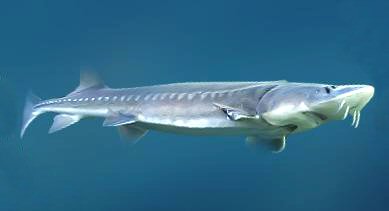The Natrual Habitat of the Kaluga.

The Kaluga Sturgeon is a benthic (bottom dwelling) species, that inhabit rivers, lakes and coastal sea waters. They are semi-anadromous fishes spend at least part of their life in salt water and return to rivers to breed. The estuary population is represented by two ecological morphs: the freshwater morph and brackish water morph. The freshwater is the predominant and feeds only in fresh water. The brackish water form spends winter in the river or estuary and in late June-early July, migrates to the Tatar Strait and the Sahalin Gulf and in autumn, when the salinity of the estuary increases, it return to the river where they overwinter together with the freshwater form. In the first year of life, Kaluga consume mostly invertebrates, later switching to juveniles of Chum Salmon and, at age of 3 to 4 years, Kaluga start to feed on adult fishes like saffron cod and ocean perch. Cannibalism is, also, frequent. During winter and during spawning migrations, Kaluga does not feed at all.
Back to Homepage
Back to example sites